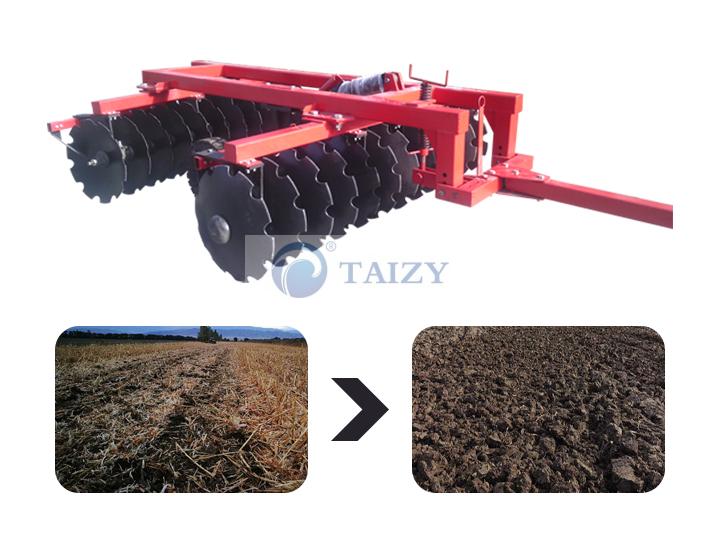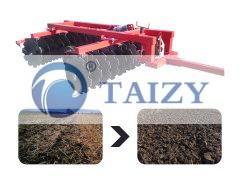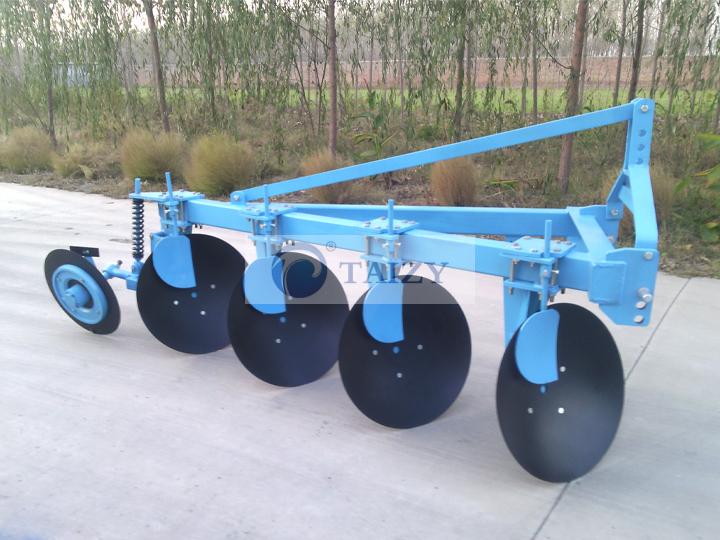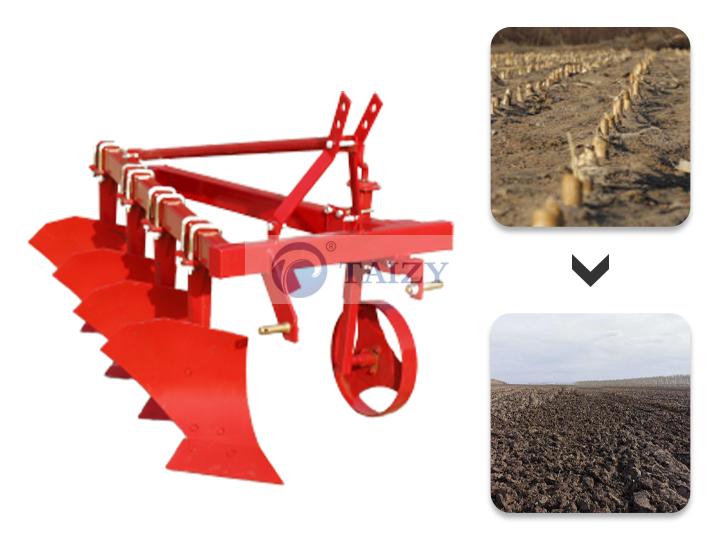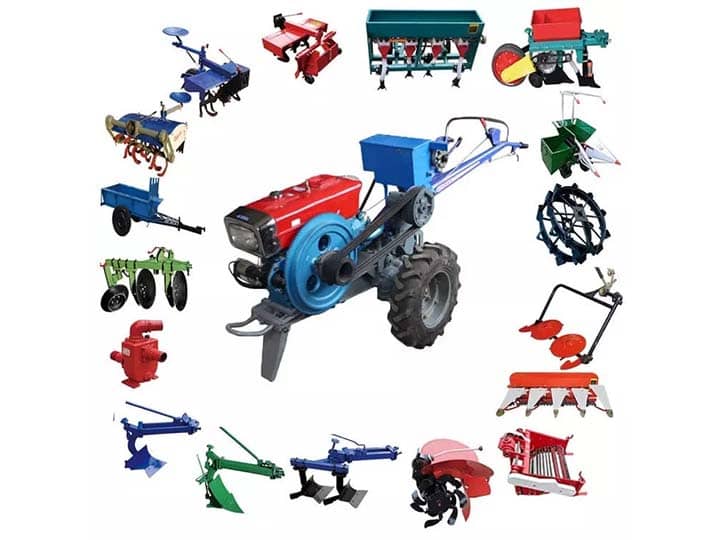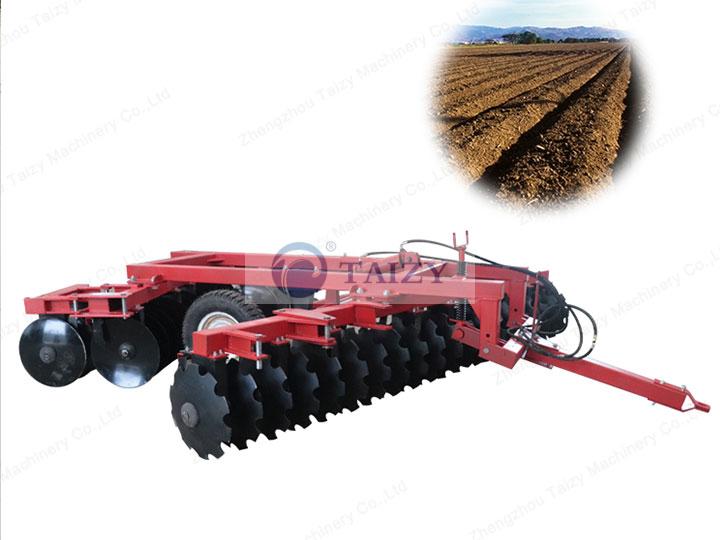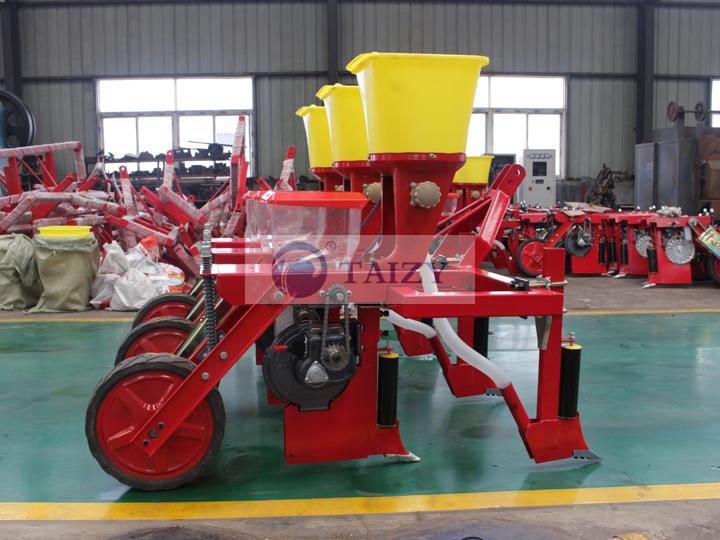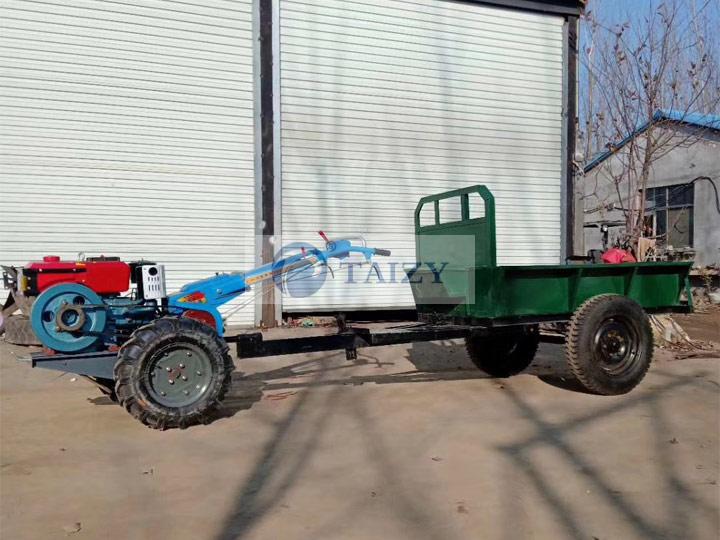Heavy disc harrow | Hydraulic trailed heavy-duty harrow
Heavy disc harrow | Hydraulic trailed heavy-duty harrow
Tractor disc harrow | Tillage equipment
The traction heavy disc harrow is a tillage tool. It has a rake group composed of a plurality of concave discs. These discs are fixed on a horizontal shaft as a working part. It has strong adaptability to heavy soil, wasteland, and weedy plots.
It is mainly used for plowing uncultivated land, also for stubble removal before plowing, harrowing after plowing, loosening the soil, etc. When the heavy disc harrow works, it can mix the surface fertilizers and pesticides with the surface soil to achieve the effect of leveling and moisture preservation.
Structure of the heavy disc harrow
The disc harrow is generally composed of a rake group, rake frame, deflection adjustment mechanism, and hooking device.
Rake group
The rake group is composed of rake blades, intermediate pipes, square shafts, bearings, and scrapers. Harrow blades are generally spherical discs. There are two types of discs, a full blade, and a notched blade. The former is simple to make and easy to grind. The latter has a strong ability to enter the soil. This helps cut dirt and stubble weeds.
And the center of the blade is a square hole through the square shaft. When working, the harrow blades rotate together with the square shaft. Which is connected to the rake frame through a bearing, and the rake blades on the same shaft are separated by an intermediate tube.
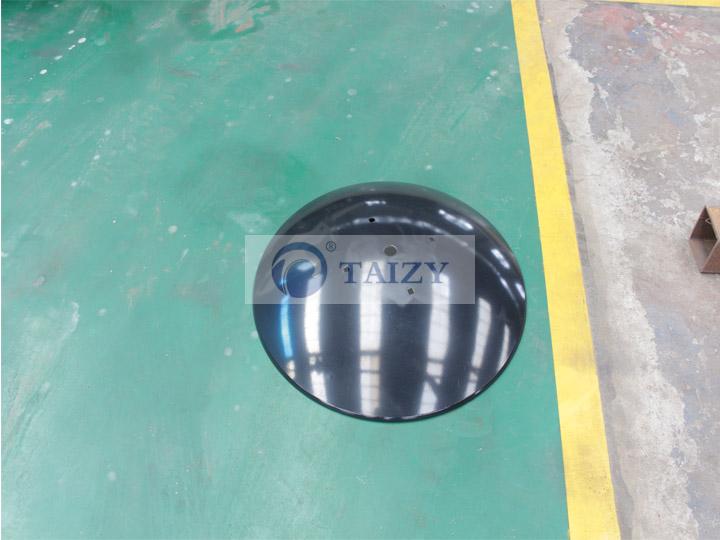
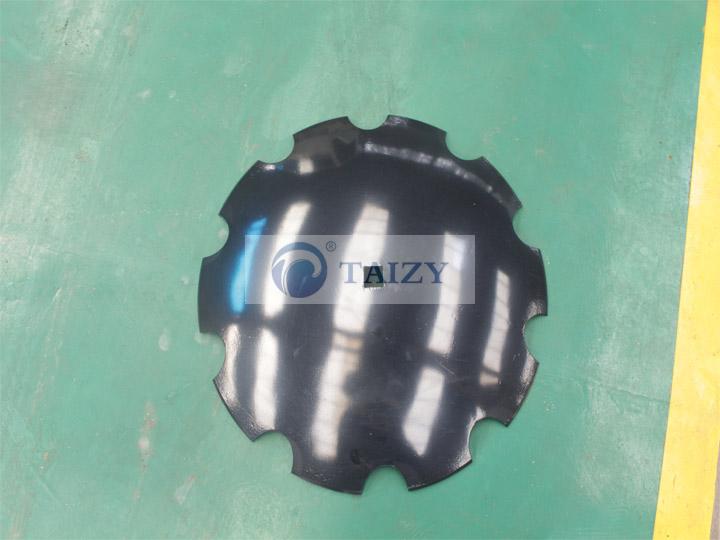
Rake frame
The rake frame is used to install the disc harrow group, adjustment mechanism, hooking device, and other components.
Some rake frames are also equipped with a load box so that counterweights can be added when necessary to increase and maintain the depth of the rake.
The deflection angle adjustment mechanism is used to adjust the deflection angle of the heavy disc harrow to meet the requirements of different rake depths.


Deflection adjustment mechanism
Angle adjusters include lead screw type, tooth plate type, hydraulic type, bolt type, pressure plate type, and hand lever type.
The bracket is fixed on the traction main beam, the upper and lower slide plates are fixed with the traction frame, and can move along the main beam, and the moving range is limited by the bracket at the end of the tooth plate.
Hooking device
The hitch is a heavy disc harrow connected to the tractor through a traction device or a suspension device.
Working principle of farm implement harrow
- Groups of concave discs are used as working parts.
- The blade edge plane is perpendicular to the ground and has an adjustable deflection angle with the forward direction of the unit.
- The blades of the harrow blades cut into the soil to cut off grassroots and crop residues, and the soil is raised to a certain height along the concave surface of the harrow blades and then flipped down.
Hydraulic trailed heavy-duty harrow advantages
- Rugged, phased frame and durable bearing hangers extend work life.
- Independent slice blade gangs acclimate fluently with one leg.
- Heavy downforce makes each blade dig deeper.
- Notched blades cut into the dirt.
- Smooth blades leave a fine finish.
- Slush scrapers that help clogging.

Configuration form of tractor disc harrow
According to the configuration of the rake group, we can divide it into three types: single-row opposed type, double-row opposed type, and offset type heavy disc harrow.
- Single-row opposed type. The left and right sides of the rake components are arranged in a single row. The left and right rows each consist of one or more rake groups with opposite concave surfaces. It is used for flat land of irrigated land, stubble after harvest, and shallow plowing of fallow land.
- Double-row opposed type. Each column is symmetrically arranged by two rows of rake groups on the left and right. The concave surfaces of the discs of the front two rows of rake groups are opposed to each other.
- Offset type. It consists of two rows of rake groups with opposite concave surfaces of the discs in the front and the back. The width centerline of the rake can deviate far from the longitudinal axis of the tractor during operation. The wide offset rake can reach more than 3 meters. When used in an orchard, you can extend the offset rake to work under the canopy where the tractor cannot enter. Because the offset rake has no missing tillage zone, it is also widely used in field operations.


How to choose your tillage equipment?
- The 1BZ series hydraulic heavy disc harrow has high working efficiency and strong soil penetration ability.
- This kind of rake well adapts to sticky soil, wasteland, and weedy plots.
- The rake is also equipped with hydraulic lifting rubber wheels.
- So it can greatly improve the production efficiency and service life of the rake.


Parameters of disc heavy harrow
| Model | Working width(mm) | Working depth(mm) | Diameter of the disc(mm) | No. of disc(pcs) | Weight (kg) | Matched power(hp) | Linkage |
| 1BZ-1.8 | 1800 | 200 | 660 | 16 | 1160 | 70 | Hydraulic trailed with tractor |
| 1BZ-2.2 | 2200 | 200 | 660 | 20 | 1250 | 80 | Hydraulic trailed with tractor |
| 1BZ-2.5 | 2500 | 200 | 660 | 24 | 1350 | 90 | Hydraulic trailed with tractor |
| 1BZ-3.0 | 3000 | 200 | 660 | 28 | 1430 | 100 | Hydraulic trailed with tractor |
| 1BZ-3.4 | 3400 | 200 | 660 | 32 | 1550 | 120 | Hydraulic trailed with tractor |
| 1BZ-4.0 | 4000 | 200 | 660 | 36 | 1900 | 150 | Hydraulic trailed with tractor |
| 1BZ-5.3 | 5300 | 200 | 660 | 48 | 2500 | 180 | Hydraulic trailed with tractor |
| Model | 1BZD-2.6 | 1BZD-3.0 | 1BZD-3.3 | 1BZD-4.0 | 1BZD-4.3 | 1BZD-4.8 | 1BZDF-4.5 |
| Working width(mm) | 2600 | 3000 | 3300 | 4000 | 4400 | 4800 | 4500 |
| Working depth(mm) | 200-250 | 200-250 | 200-250 | 200-250 | 200-250 | 200-250 | 250 |
| Diameter of disc(mm) | 660 | 660 | 660 | 660 | 660 | 660 | 660 |
| Thickness of the disc(mm) | 5 | 5 | 5 | 5 | 5 | 5 | 6 |
| No. of disc(pcs) | 16 | 18 | 20 | 24 | 28 | 32 | 40 |
| Weight(kg) | 1150 | 1250 | 1350 | 1500 | 1600 | 1800 | 3200 |
| Matched power(hp) | 60-70 | 70-80 | 80-90 | 90-100 | 100-110 | 110-120 | 150-160 |
| Linkage | Hydraulic trailed with tractor | Hydraulic trailed with tractor | Hydraulic trailed with tractor | Hydraulic trailed with tractor | Hydraulic trailed with tractor | Hydraulic trailed with tractor | hydraulic trailed folding |
Correct use and maintenance of field cultivation harrow
- During use, check the technical condition of the rake blade, scraper, square shaft, bearing, angle adjuster, and various connecting parts frequently.
- Especially the end nuts of the heavy disc harrow and the fixing bolts of each bearing.
- After the operation, cleaned and overhauled the rake group of the heavy disc harrow.
- If not use the transport wheel, it will damage the disc harrow group prematurely.
- When transporting in the field or near dirt roads, adjust the inclination angle to zero.
If you have any questions or need more information about this product, please feel free to fill out the form on the right for consultation, we look forward to working with you.

